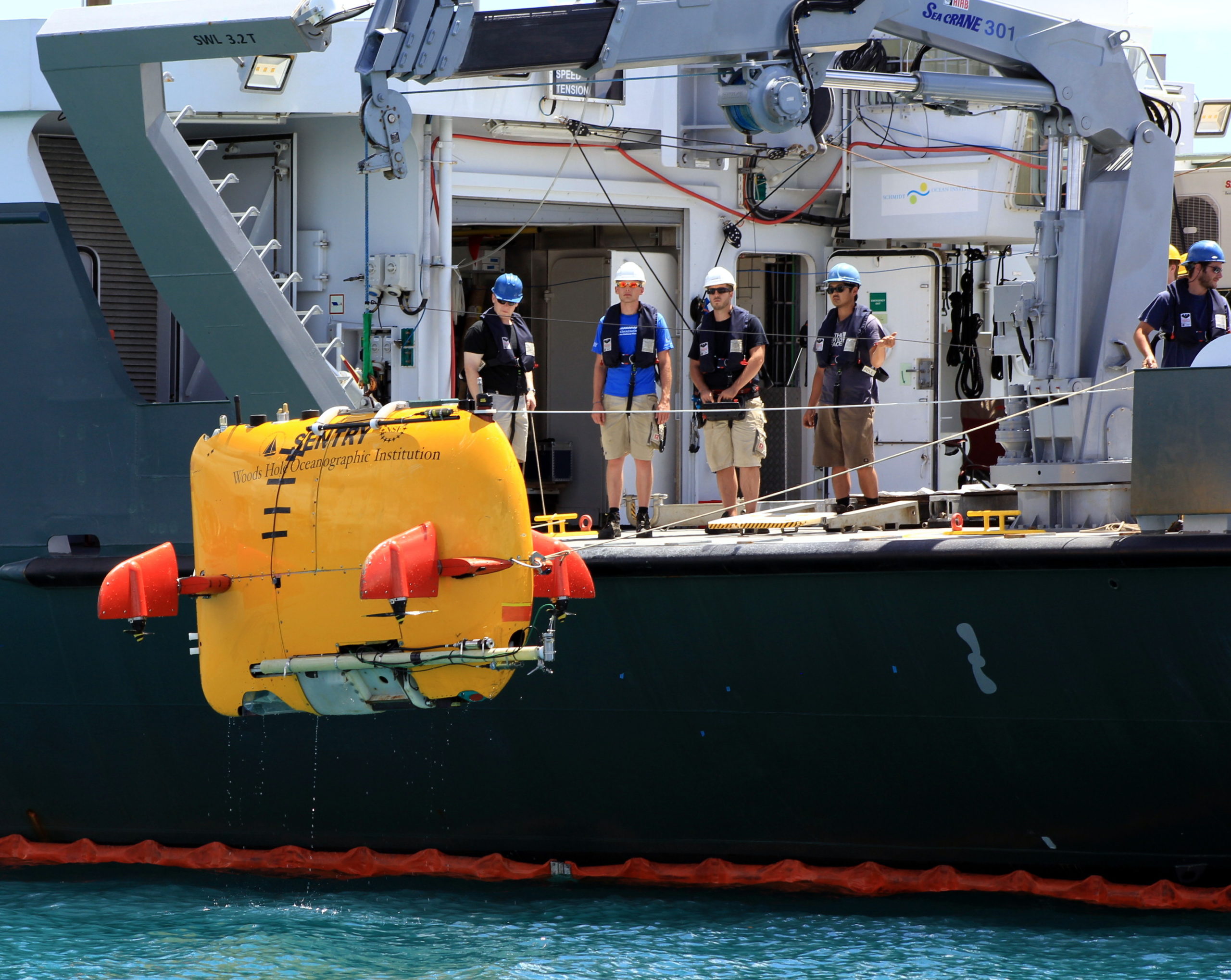Topic
Hydrothermal Vents

Tracking down Hydrothermal Vents at the Mariana Back-Arc
Scattered along the barren ocean floor lie numerous, unexplored hydrothermal vent sites — oases of hot, chemical-rich, life-nurturing fluids. These sites are similar to underwater versions of the hot springs and geysers at Yellowstone National Park.

By Dr. Edward T. Baker,
Joint Institute for the Study of the Atmosphere and Ocean (University of Washington, NOAA OAR)
How Do Hydrothermal Vents Form?
Cold seawater in deep cracks within Earth’s crust is heated by cooling magma, becomes buoyant, and rises to the seafloor. Instead of forming a warm pond, as at Yellowstone, the hot fluid rises like a hot-air balloon into the cold ocean, cooling as it mixes with the frigid seawater. Mixing continuously dilutes the hot discharge and increases its volume as it rises, until the hydrothermal plume achieves neutral buoyancy and is dispersed by local ocean currents. This hydrothermal circulation pattern occurs wherever seafloor cracks can channel seawater to layers of hot rock.

First, You Need a Good Map
One of our main goals during this expedition (Hydrothermal Hunt at Mariana, 2015) on R/V Falkor was to determine where hydrothermal vent sites lie along an area in the western Pacific Ocean called the Mariana Back-arc.
The first step in searching for vents is to develop a detailed map of the seafloor. Underwater topographic maps called bathymetric maps precisely define the shape of the seafloor. Seafloor bathymetry provides a roadmap that greatly narrows our search by identifying the path along the seafloor where the most recent seafloor spreading is occurring. On the Mariana Back-arc, seafloor spreading has created a broad valley whose size rivals the Grand Canyon. It is here where deep, still-molten magma may be powering active vents.

Hunting for Plumes
Our search was challenging because the active discharge openings of vents are small, scattered, and difficult to find. We greatly enhance the chance of success by searching first for the telltale plumes the vents emit, and not the vents themselves. As a trail of wind-blown smoke draws the eye to a smokestack, oceanographers use maps of hydrothermal plume tracers that lead back towards a field of vents. The tracers can be physical measurements such as changes in temperature, salinity, and turbidity of the water. Chemical characteristics of the plume are also used, including various trace metals and gases common in a hydrothermal discharge.


To map these plumes, we have two powerful tools on board. The first is a basic instrument, used by oceanographers around the world called a Conductivity, Temperature, and Depth (CTD) profiler. It includes specialized sensors to detect specific chemical tracers and bottles to collect water samples. We tow the CTD behind the ship, a few hundred meters above the seafloor, as we slowly travel along the spreading center path, collecting data to identify likely vent locations. To precisely locate the vents themselves, we next deploy a better bloodhound, Sentry. Sentry is an autonomous underwater vehicle (AUV) that can navigate precise grids over the seafloor and use a variety of sensors to “sniff out” the source of a hydrothermal plume. Ultimately, Sentry flies closer to the seafloor than the CTD, making high-resolution sonar maps or capturing images of animal life and the vent sites themselves.
